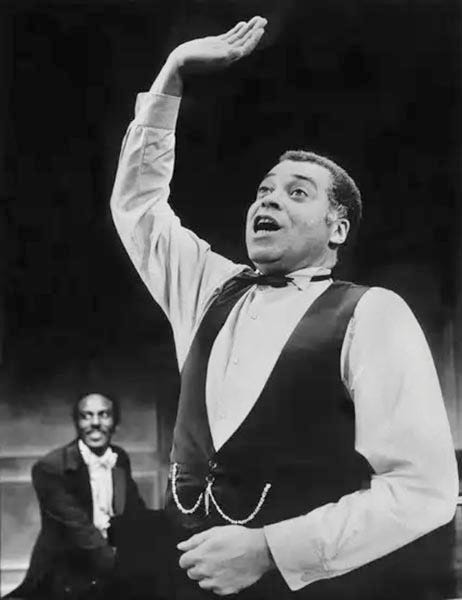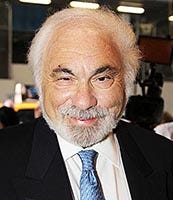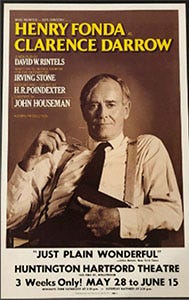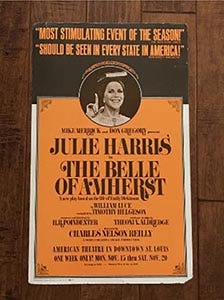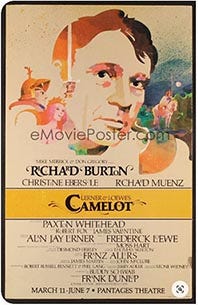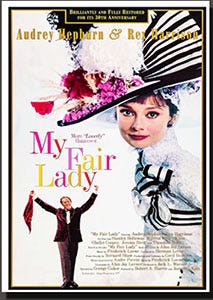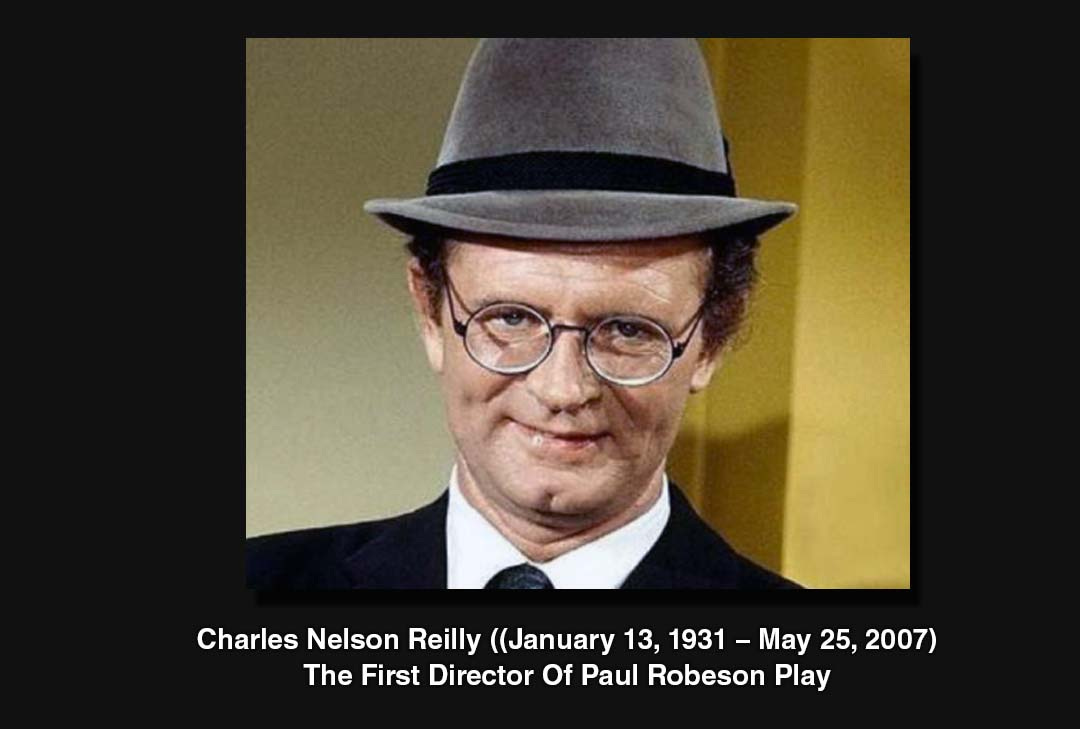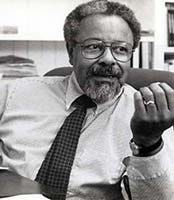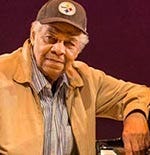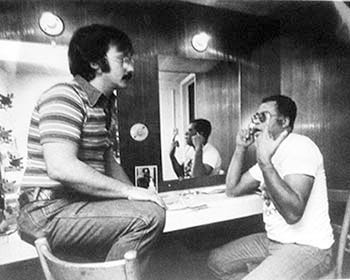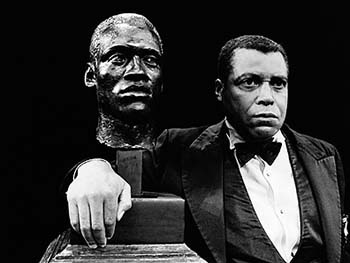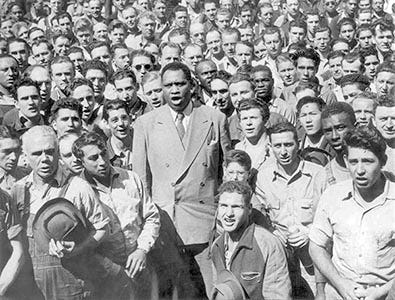My Best Job Ever - Stage Manager for James Earl Jones
One of the highlights of my life was touring with James Earl Jones as stage manager for his Broadway one man-show, "Paul Robeson."
It had to be around 2:30 a.m. when our phone rang. We were living in a loft on East 17th Street near Union Square. My wife and I were sound asleep. I picked up the phone to hear the voice of Darth Vader—literally. It was no dream. James Earl Jones was on the phone.
He apologized for waking me. He was on the West Coast and asked me if I wanted to stage manage his new show, Paul Robeson that was beginning rehearsals in Los Angeles.
Although it seems like a no brainer, it really wasn't. I had earned my M.F.A from NYU School of the Arts (now Tisch) the previous year. My wife, Christine, and I were living in a terrific space where I had my own 60 seat theater in the back.
I had a great job at ABC-TV on W. 66th as a video engineer. I was working with the top directors in the TV industry, a position to which I aspired. Plus, I was making some very nice money doing it.
I met Mr. Jones while at NYU. I was in a design class when a messenger walked in to announce that they needed a stage manager for a show that James Earl Jones would be guest directing. He had gotten a lot of attention and a Tony Award for The Great White Hope, on Broadway and then later did the film.
There were rumors that he was the voice of Darth Vader, but he hadn't admitted to it yet. I thought his would be an excellent opportunity to work with a professional on his level. I volunteered.
I staged managed a show for him while he was a guest director at NYU, and I impressed him enough that he offered me the stage manager job on his next show.
The first Broadway show he did was Of Mice and Men. Unfortunately for me, the stage manager had to be his understudy, so I missed that one. Frankie Faison, another classmate of mine, of The Wire fame got that one. On the next one, Paul Robeson, he didn't forget me. So gave the wife a kiss goodbye and caught a non-stop to L.A. to begin rehearsals.
It was the first time I was in L.A. Big difference from grungy 70s Big Apple.Every day is the same day. Sunshine, 80-90 degrees. Great tans all around. Sandwiches with bean sprouts. We rehearsed in a building with four floors of rehearsal studios. Hot dancers in tights working out routines for TV. Everyone is in show biz or aspiring.
Now I got to meet everyone.
Don Gregory was the producer. A tall, well-dressed man guy with a beard and white hair, a Kenny Rogers look alike. He looked exactly like you would expect a producer to look. His son David Gregory grew up to be the moderator of NBC’s Meet the Press. Don made his reputation early producing his first stage play; a one-person show starring Henry Fonda entitled Clarence Darrow.
He followed up with The Belle of Amherst, starring Julie Harris directed by Charles Nelson Reilly. Later on Don staged revivals of Camelot with Richard Burton and My Fair Lady with Rex Harrison He also produced the hugely successful Harvey. He passed away in 2015. Don Gregory obituary
Charles Nelson Reilly had successfully directed the Belle of Amherst for Don. Charles. He flitted around with that lanky body of his, cracking jokes, always on—Hollywood Stars in person. He was an incrediblly likeable and entertaining guy.
James Earl Jones, and he didn’t hit it off. He was replaced in short order . Mr. Reilly passed away in 2007. Charles Nelson Reilly obituary
In stepped Lloyd Richards in his place. A total opposite. He looked like an Ewok from Star Wars. Short, beard, big eyes, he was actually Yoda though. He was brilliant, perceptive, warm, patient, insightful, unpretentious...I could go on with the praise. What a great man!
He was a groundbreaking Tony Award-winning American director who worked on Broadway, in regional theater and was highly respected the academic community. He got his notoriety when he staged Elaine Hansberry's A Raisin in the Sun, in 1959.
He was the dean of the Yale School of Drama and Yale University professor emeritus. Later, in 1984, he introduced August Wilson to Broadway in Ma Rainey's Black Bottom.
Later he became famous for his work with August Wilson and their collaboration on such plays as Fences. But the play would go on to enjoy successful revivals in 1988 and 1995, and has been produced throughout the United States and in Europe.
He and James Earl got along famously. I was really saddened when he died in 2006.
Lloyd Richards obituary in Washington Post
The playwright, Philip Hayes, Dean attended many of the rehearsals, and was intimately involved in it’s development. Mr. Dean did have a way with words and painted some beautifully rhythmic and powerful dialogue. He also wrote a number of well-received plays, including “The Sty of the Blind Pig,” set in Chicago as the dawn of the civil rights movement begins to unsettle the settled ways of the play’s characters; “Freeman,” about the diverse paths of two young black men in a small Michigan city much like Pontiac, where Mr. Dean came of age; and “Every Night When the Sun Goes Down,” which focuses on black-on-black exploitation and violence.
The play was controversial when it debuted on Broadway in 1978; James Earl Jones some of Robeson's relatives disagreed with his warts-and-all portrayal. There were times Mr. Jones and he disagreed on the script, but ultimately they would hash it out with Mr. Jones’ viewpoint usually winning out.
Lloyd Richards and Mr. Jones worked tirelessly with Dean in getting the play in shape. There were endless revisions.
He died on April 14, 2014, aged 83. Philip Hayes Dean obituary
The play was initially intended as a television drama starring Mr. Jones. The television presentation never panned out, and it evolved into a stage production which we began touring in the fall of 1977.
We had our first preview at a UCLA stage in L.A. I wound up doing quite of script prompting bit during our tour. I sat in the orchestra and fed Mr. Jones lines when he stumbled. The play changed daily so keeping up with lines was a bit of a challenge for him. Although far from what it would ultimately be, it was well received by the audience.
We toured nationally in an extended pre-Broadway run, starting St. Louis, then to Milwaukee, Chicago, Louisville, Washington D.C., Philadelphia and lastly, Boston before opening at the Lunt-Fontanne theater on 46th on Broadway.
My wife joined us in Chicago. What started out as a visit wound up being a position on the show's crew. So many changes were happening they needed a regular typist. Christine was an excellent typist, and she volunteered, but it wound up with a paying job for the rest of the tour.
The crew was great to work with and excellent fun during off hours. A nice camaraderie developed. The amount of flying got to be a bore though so we were all very excited when we finally arrived back in the city.
On opening night, Phil Stein, who was an experienced Broadway stage manager, had to go back to Los Angeles on personal business, which left me alone to run the show. First Broadway show and all by myself, opening night, with no backup. It’s true, I was just a little nervous.
Just before opening night, a letter signed by 56 writers, artists and politicians — among them Alvin Ailey, Maya Angelou, James Baldwin, Charles Rangel, Coretta Scott King, Julian Bond and Robeson’s son, Paul Jr., who appeared to be the leader of the protest— appeared as a paid advertisement in Variety.
That shocked everyone on the cast and crew was really taken aback by that. Phillip Hayes Dean was especially upset, so much so he never wrote another play.
As stage manager, I ultimately saw the show including pre-Broadway performances over 120 times, and I can tell you, from my limited viewpoint, it in no way shortchanged the life of Paul Robeson. The performance was powerful and despite it being a one-man show lasting almost two hours, the audienes were rapt with attention by his powerful voice and delivery.
It was detailed and complex and full of admiration for the man. My personal take on it was that the Robeson family was annoyed or insulted that they really had no say in the development of the show. Families of famous personalities can get very possessive of a legacy. But then again, what do I know.
Paul Robeson achieved international fame in the 1930s and 1940s as an actor and singer, starring in Show Boat and a version of Othello that set a record for the longest-running production of a Shakespeare play on Broadway.
But he achieved even more fame—or notoriety—as an activist, traveling the world to speak out against fascism, African colonialism, U.S. racism, and the Cold War.
In material drawn from Robeson’s autobiography and letters, Jones encapsulates the icon’s beliefs in scientific socialism, peace, and a vision of racial unity. As a result, he was virtually blacklisted from the entertainment industry. His passport was revoked and his concerts were canceled. His dazzling career was shattered.
Only towards the end of his life did he resume public appearances and his fame began to revive. His right to travel was eventually restored by the 1958 United States Supreme Court decision, Kent v. Dulles, but his health broke down. He retired and he lived out the remaining years of his life privately in Philadelphia. He died in 1976.
Jones channels him in a two-hour, two-act play conceived as Robeson talking to the audience at an awards show as he was being honored at Carnegie Hall at age 75.
It was an event he did not attend, due to ill health and lingering bitterness over his treatment in the U.S, so we hear what Robeson might have been thinking as he watches his own enshrinement. He reviews his life experiences through stories, reenacted , and songs. (from Wikipedia)
A good synopsis and historical perspective on James Earl Jones' Paul Robeson is at a Paul Robeson Review if you have an interest.
On stage with James Earl was Burt Wallace, a lean, long fingered, Haitian American and superb pianist who provided the musical transitions and created moods on stage behind Mr. Jones riveting performances.
“Robeson” from the beginning was billed as limited run. A major snowstorm hit the City the night we opened on January 19th, 1978, which kept the audience small, but once we got passed that, we had excellent sized audiences.
After performances, backstage we got to meet the celebrities that came to visit Mr. Jones —Diana Ross, Michael Jackson, Muhammed Ali and many more that I won't list. Our run last seventy-seven performances.
Joe Papp's Shakespeare Festival immediately picked it up, and it ran in conjunction with Ntozake Shange's For Colored Girls Who Have Considered Suicide... at the Booth Theater on 46th Street for a short period, where I alternately stage managed both shows.
It was a big letdown once the show ended. Funny thing about a high-profile, showbiz job. While you're there, it seems you'll always be there, but once it ends, you have to start all over again.
A few months later Don Gregory called and asked me if I wanted to do another one-man show for him starring Richard Chamberlain with rehearsals starting in L.A.
I said sure. Since our lease was up on our loft, we decided not to renew. We packed up and drove to Los Angeles to begin the show. Once there, delays, delays, delays and ultimately Gregory canceled the show leaving us high and dry.
We headed home but once we returned, we couldn't get back into NYC. The rents had tripled in a few months from our original lease plus—surprise--we were having a baby. There wasn't much to do while we waited around in L.A. Bye, bye, Big Apple.
http://www.ibdb.com/production.php?id=4038 for imdb paul robeson show
http://www.popmatters.com/review/paul-robeson-dvd
https://en.wikipedia.org/wiki/Paul_Robeson
A good synopsis and historical perspective on James Earl Jones' Paul Robeson at http://www.popmatters.com/review/paul-robeson-dvd





